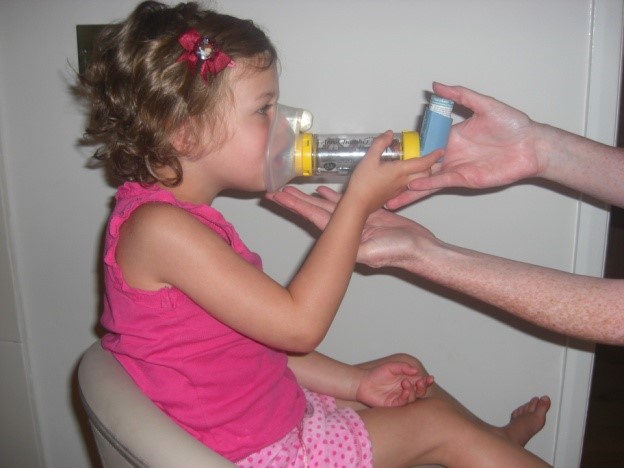You may have previously been issued with advice to gradually reduce the number and frequency of puffs of their blue (salbutamol) rescue inhaler over a few days (a weaning plan). We now recognise that ‘weaning plans’ may hide the more serious symptoms which should be reassessed earlier by the GP or in hospital for further potential treatment. As a result, we now use personalised asthma action plans that tailor the amount of rescue medication to your child based on how comfortable they are with their breathing.
Following discharge from hospital you should expect that your child will still require further doses of their rescue inhaler. You should check how they are at least every 3-4 hours to asses whether they need another dose. It may take 2-3 days for symptoms to settle fully.
If they are still having symptoms, give 2 puffs of the rescue inhaler one puff at a time. After 5-10 minutes, if they are still having symptoms repeat this until they have had up to 6 puffs. If this does not settle their symptoms or they need the inhaler more often than every 4 hours you should seek urgent advice. You can increase up to 10 puffs if needed whilst on the way to a medical assessment.
Other concerning symptoms (as outlined in the table above) include: drowsiness, change in colour, being too breathless to speak or eat, persistent cough or worsening wheeze. If this occurs you should follow the emergency plan and give 10 puffs of the inhaler and call an ambulance.
In the event that your child has been started on steroid tablets, these should be continued once daily (usual treatment course is 3-5 days). You should continue your child’s normal preventer treatment(s) during an acute exacerbation of asthma
You must arrange a GP appointment within 48 hours of discharge to check that their original asthma attack has subsided.
In some circumstances you may be advised to have a higher dose of rescue medication for 1-2 days prior to following your personal asthma action plan.






